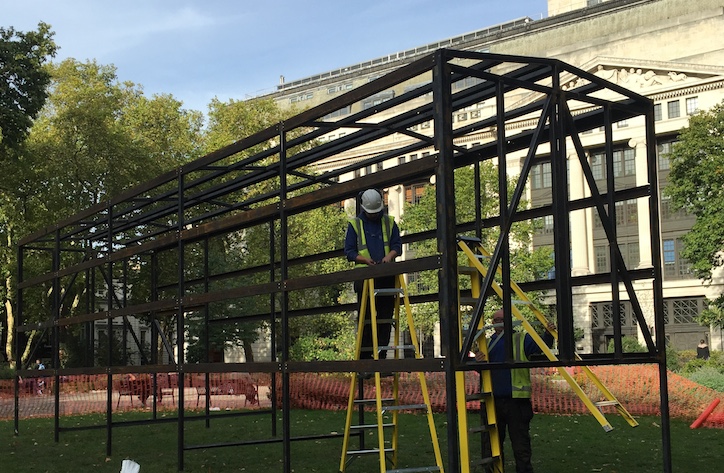Pushkin House to launch Russian poets-in-exile exhibition with Alexander Brodsky pavilion

London’s Pushkin House is launching an exhibition about Russian poets-in-exile as part of its commemoration of this year’s centenary of the Russian Revolution.
The centrepiece of the project will be a pavilion, resembling a railway carriage, that has been designed by artist and architect Alexander Brodsky on Bloomsbury Square. The pavilion will be officially opened on 18 October and the art object-cum-exhibition space can be visited by the public between 11am and dusk until 10 November.
The project is called 101st km Further Everywhere, a reference to the Soviet practice whereby those out of favour with the authorities were forced to live more than 100 kilometres from major cities. Often the punishment was imposed on prisoners, including artists and writers, immediately after they had been released from prison camps.
“The 101st kilometre is a metaphor for all the involuntary farewells, punishment and displacement, exile and refuge that took place in the turmoil following the revolution,” says pavilion curator Markus Lähteenmäki.
The pavilion will be accompanied by an exhibition inside Pushkin House about repressed literature in Soviet times and a series of events including lectures, poetry readings, photographs, film screenings and concerts.
Moscow-born Alexander Brodsky, who designed the pavilion, is known for blurring the line between art and architecture and his work has been exhibited in major galleries in Europe and the United States. The Calvert Foundation hosted the first ever UK showing of Brodsky’s work in 2012.
More details about the exhibition and events be found here.